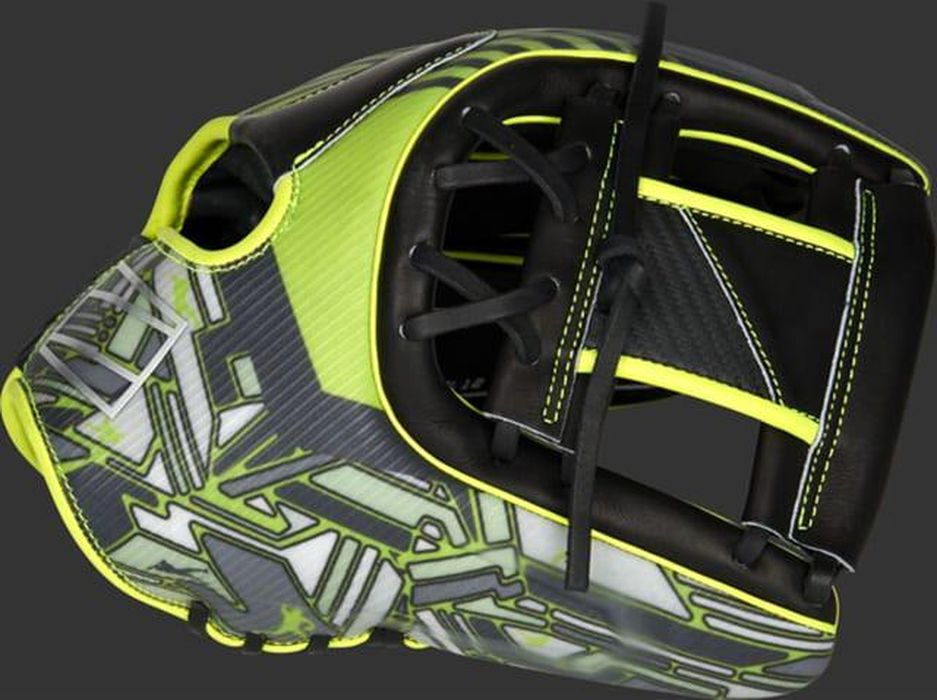
Incorporating lattices has not only enhanced the quality of Rawlings’ baseball gloves, but stands to improve players’ performance.
As cloud-based 3D printing continues to burgeon, the world of sports equipment manufacturing has begun to evolve as well. Two months ago, engineering.com reported on a high-performance 3D-printed hockey helmet that was developed using the latest additive manufacturing innovations.
Now, a three-way partnership between Rawlings, Fast Radius and Carbon has led to the creation of the REV1X glove. Light, durable and flexible, the glove eschews the traditional ensemble of felt, plastic, wool and foam in favor of complex lattice inserts for enhanced ball control and durability.
“The lattice insert is a major milestone in glove design and brings the latest in additive manufacturing technology to baseball,” said Philip Desimone, co-founder and chief product and business development officer at Carbon. “The integration of digitally manufactured lattice offers several performance improvements for players, including weight reduction and variable stiffness in the thumb and pinky. By latticing the finger padding, the weight of the glove is reduced, which increases acceleration by reducing the moment of inertia—all without sacrificing protection, durability or playability. For the player, the lighter weight means a faster reaction time and a more controllable glove, resulting in better fielding.”
A Seamless Transition from Design to Production

The REV1X glove represents the first time a significant technological innovation has been made to baseball gloves in over 50 years. Rawlings, a premier manufacturer of baseball equipment since 1887, is the official supplier of baseball gloves, helmets and face guards for players in major leagues as well as minor leagues. Having recognized the need for a more wear-resistant glove that would facilitate player performance, Rawlings created a brand new design that would not need to be “broken in” like traditional gloves and fits the shape of the player’s hand.
“The complex lattice structure is designed with detailed player feedback to add stiffness in the regions where it is necessary and soften regions where a certain flexure is required, adding another dimension of control in the design,” said Desimone.
Numerous MLB players were consulted during the design phase of the project. Chief amongst them was New York Mets’ four-time all-star shortstop player, Francisco Lindor, who is also serving as the face of the REV1X glove in the U.S.
“Traditional ball gloves take a long time to break in because of the characteristics of the natural materials,” stated Rawlings’ senior director of ball gloves, Ryan Farrar. “In a glove, you have several layers to work in before you can form a nice pocket. Shell palm, shell liner (where your fingers go), palm liner, and the 3-finger padding. That is a lot of material to break down when breaking in a glove, but that is also why a glove that is constructed out of high-end material can last a long time.”
The bulk of the design efforts went into re-thinking the plastic/wool stabilizers in the pinky and thumb. FPU 50 lattices proved to be excellent substitutes due to their weight-to-thickness ratio and their ability to perform over long periods of time. However, translating Rawlings’ vision into an industrial-scale production proved difficult. Fortunately, this is exactly where Fast Radius excels.
As a digital manufacturing leader in end-to-end production, Fast Radius is committed to assisting manufacturers through all facets of creating products. Fast Radius’ Cloud Manufacturing Platform helps clients select the most advantageous production method—additive manufacturing, urethane casting, CNC machining, injection molding—and aids them in optimizing their design through feedback, analysis and simulations. The Cloud Manufacturing Platform also pairs clients with a suite of Fast Radius-owned micro-factories to produce parts, or third-party manufacturers located nearby. The result is an augmented design for the product, reduced production cost and time, and very little transportation costs.
Read more at ENGINEERING.com
